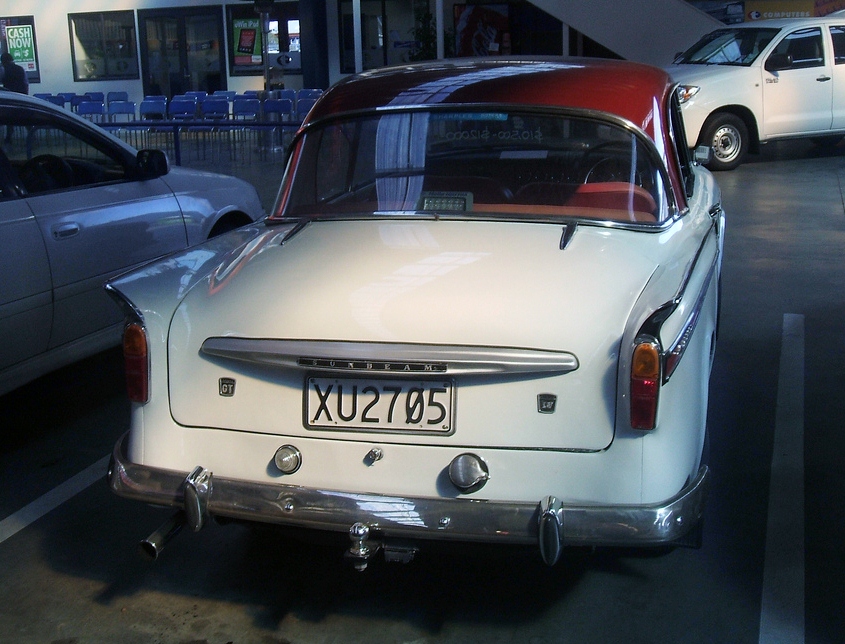
The Rootes Group was one of the earliest practitioners of badge engineering. Long before the K-Cars, ’82 GM A-body quartet or first generation Neons came into being–going back to the mid-1930s, in fact–Rootes was keeping busy with variations on a theme, a practice that by the 1950s had become a long-established Rootes tradition. Take today’s featured Sixties classic from Blightly: the 1955-67 Sunbeam Rapier. This car, the most sporting of the “Audax” series of cars built by Rootes, shared just about everything (except minor trim and interior fillips and, in some cases, engines) with the bread-and-butter Hillman Minx and medium-priced Singer Gazelle.
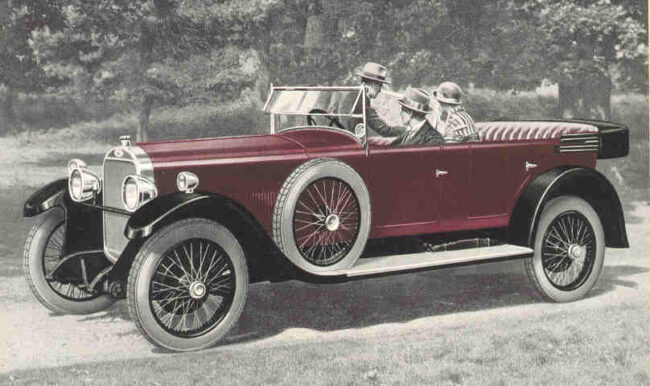
Sunbeam originally was an independent company dating from 1877, when John Marsten started a bicycle company called the Sunbeamland Cycle Factory. Naturally, the bicycles were called Sunbeams. The first Sunbeam automobile was offered in 1901, although several prototypes had been built before then. During WWI Sunbeam built trucks, ambulances and motorcycles. During the 1920s they merged with the French firm Darracq, thus gaining the Talbot marque at the same time; by then, Sunbeam had become known as a maker of very high-quality autos. Despite this, the company went into receivership in 1935, and was purchased by the Rootes Group.
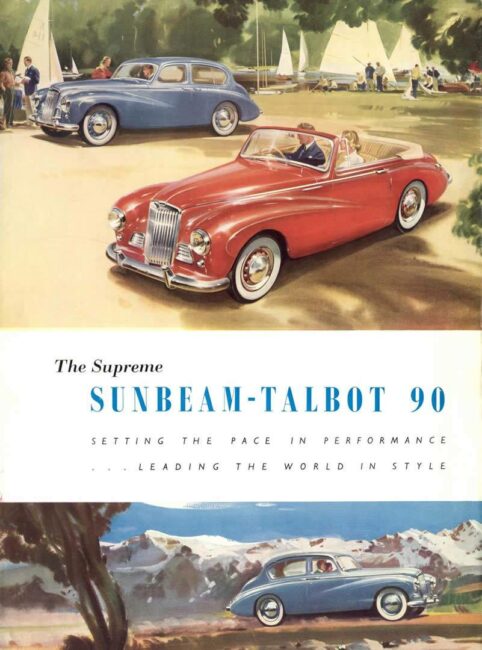
Following the acquisition, Sunbeams became derivatives of the Rootes Group’s Hillman and Humber models, but still were quite attractive cars. In 1948, the Sunbeam-Talbot 80 and 90 were introduced. These cars were quite streamlined in spite of their carryover chassis and drivetrains. The S-T 90s, including this white convertible, used an OHV version of Humber’s two-liter engine.
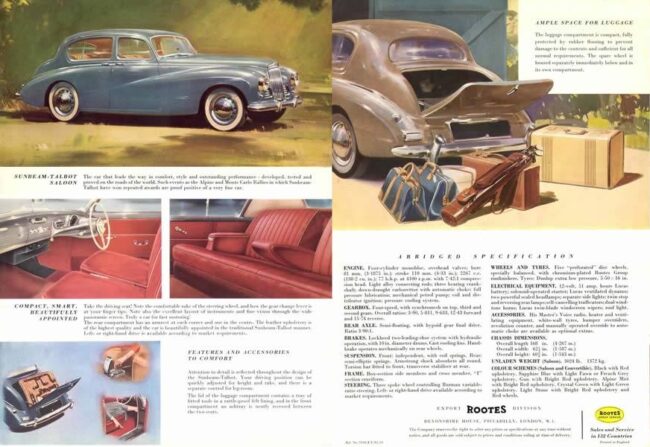
The 80s used the Hillman Minx’s 1,185cc, 47 hp mill, which really wasn’t enough engine for the car; it was gone after 1950. The Humber-engined 90 carried on, as did the sportier 1953-55 Alpine roadster. The Sunbeam-Talbot 90 lived on in subsequent Mk II and Mk IIa versions until 1954, when it became the Sunbeam Mk III. It also got a larger grille, side “portholes” and a bump up to 80 horsepower. The final cars were built in 1957, not long after the introduction of the new Sunbeam Rapier coupe and convertible.
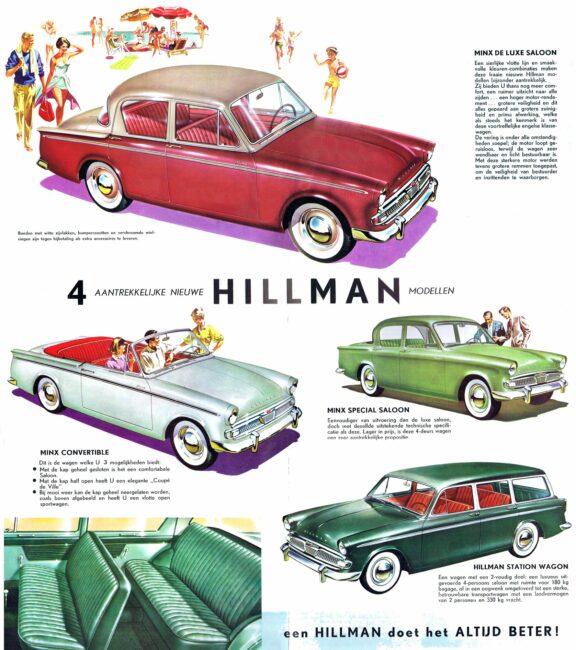
While not the first Audax model released, the Hillman Minx was the bread-and-butter version. Available in sedan, station wagon (or Estate, as called across the pond) and convertible body styles, it looked a great deal like the 1953 Studebakers, with its low hood line, shallow grille and unadorned flanks–especially without a two-tone exterior.
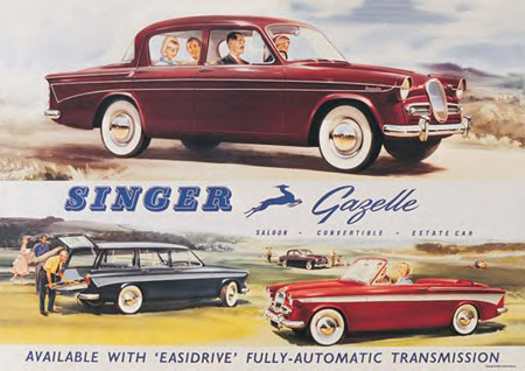
Next up the Audax chain was the Singer Gazelle. If the Minx was a Chevrolet, the Singer was more of a Pontiac or Oldsmobile. Like the Minx, the model lineup consisted of sedan, estate and convertible versions. The Gazelle sported a bit more chrome, a more prominent grille and available two-toning.
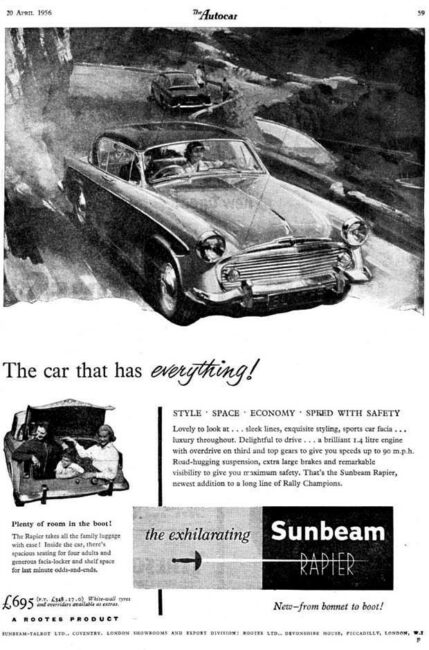
But what about the Sunbeam? Actually, the Sunbeam Rapier was the first Audax to be released. Introduced in 1955, it was positioned above both the Hillman and the Singer, available exclusively as a two-door hardtop. It wore much more elaborate two-toning than the other Audax models, and featured deluxe trim throughout. Boasting a 96″ wheelbase and 160″ overall length, it used a higher-compression, 62.5 horsepower version of the Minx’s 1390cc inline four.
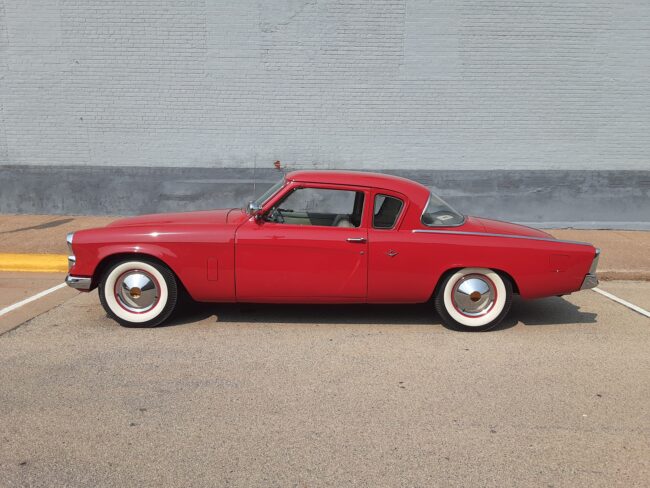
1954 Studebaker owned by my friend Dave Mitchell
If the Series I Rapier looks like a stubby Studebaker, the resemblance is strictly intentional. Raymond Loewy Associates consulted with Rootes on the Audax cars, and several styling cues, notably the reverse-curve roofline and wraparound backlight, were very familiar. Production totaled 7,477 between 1955 and early 1958.
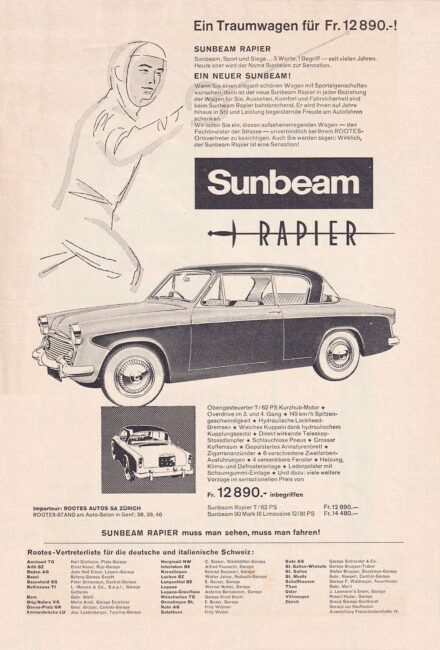
The Series II debuted in February 1958, with a new convertible model joining the hardtop. The Series II reintroduced the traditional Sunbeam radiator grille, albeit with side grilles to fill in the largely carryover front sheetmetal. Two-toning was no longer available, but the new spear-like side trim could contain a contrasting color. The biggest sheetmetal change involved the addition of fins, which made the Loewy-designed Sunbeam look even more Studebaker-like. The column shift of the Series I was replaced with a floor-mounted unit. It mated to a larger, 1494cc engine good for 73 hp @ 5200 rpm.
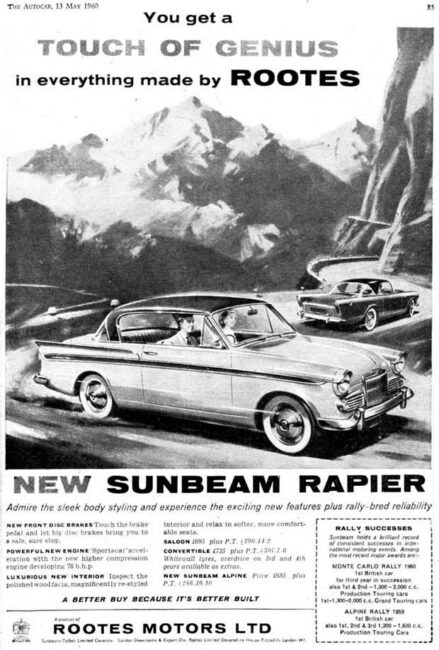
The Series III came along in late 1959. Differences were largely confined to minor trim shuffling, but narrower A-pillars allowed more glass area in front. More noticeable was the updated interior, which now featured a wooden dashboard and carpeting in place of last year’s rubber mats. Under the hood, a new cylinder head and crankshaft provided an additional five horsepower.

Outside, the 1961 Rapier Series IIIa was largely the same, but under the hood was an 80.25-hp, 1592cc engine with modified water and oil pumps. This was also the last call for the convertible, which was discontinued in mid-1963.
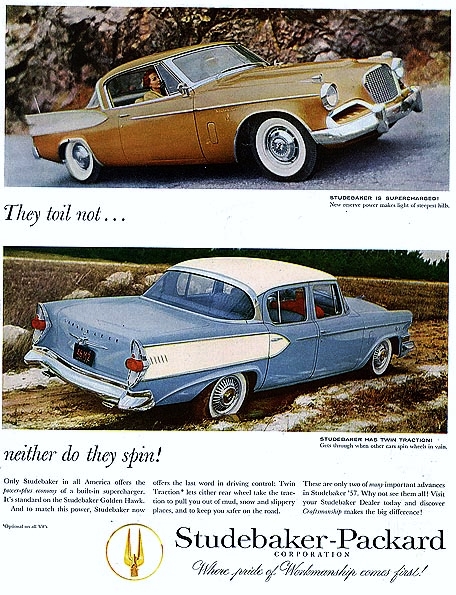
Interestingly, the Series II, III and IIIa largely mirrored the newly befinned 1956-58 Golden Hawks, right down to the tall central grille flanked by mini-grilles. I guess Loewy liked variations on a theme.
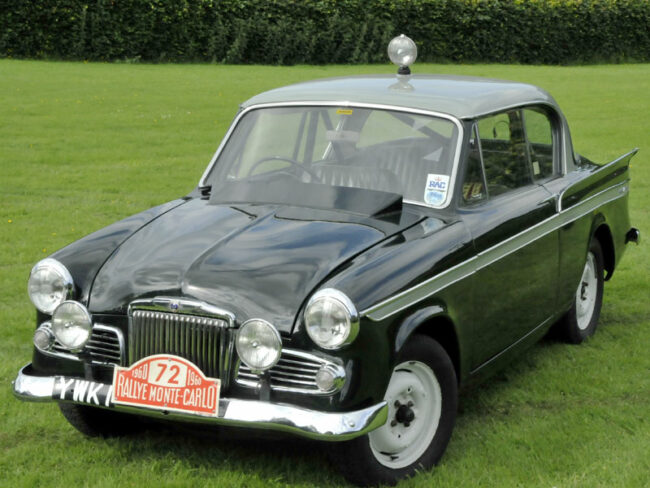
The Rapier was also a popular rally car. In the Fifties and early Sixties, Rootes Group used Rapiers as works rally cars; this surviving works car can be found on sunbeamalpine.org. A Rapier driven by Peter Harper finished fifth in the 1958 Monte Carlo Rally.
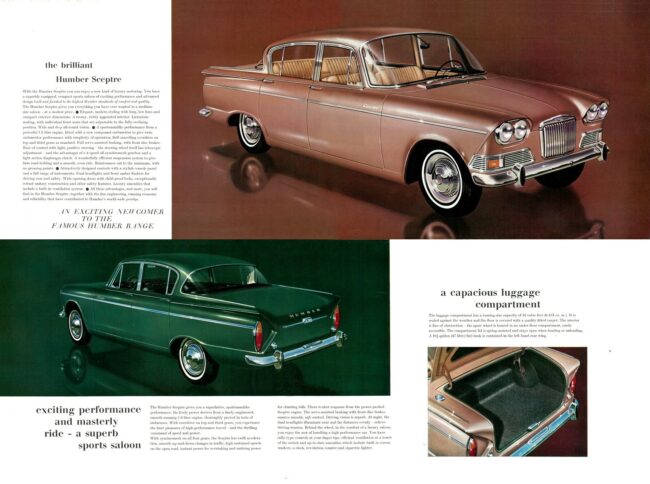
The 1964 Rapier was supposed to have been an all-new car. Although it had been designed and approved for production, Rootes had a last-minute change of heart and decided to update the IIIa instead. The would-be Rapier became the 1964 Humber Sceptre, which is pictured above.
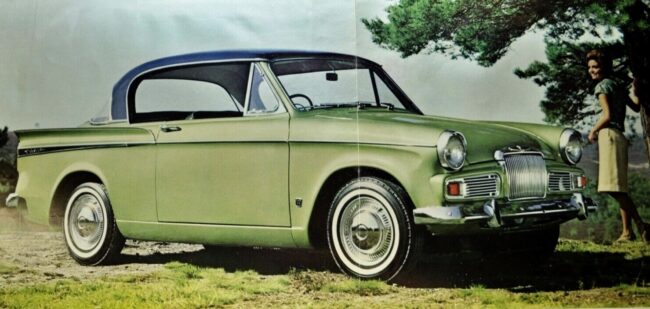
The Series IV was facelifted with a new hood, rectangular parking lamps and more angular side grilles. The Rapier’s headlight trim, borrowed from the Alpine roadster, was chromed, not painted as on the Alpine. New bumpers were fitted as well.
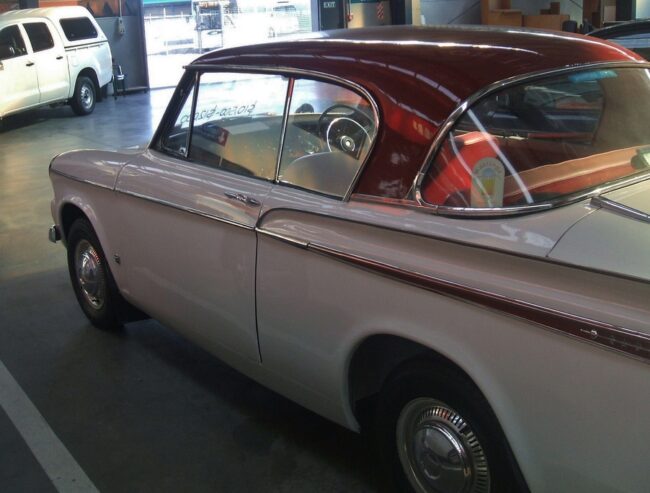
The unique stainless steel wheel trims of earlier Rapiers were gone; now the Rapier shared 13-inch wheels and hubcaps with most other Rootes Group cars. The Series IV engine was unchanged except for the substitution of a single two-barrel Solex carburetor for last year’s dual Zeniths. It now produced 84 hp and 91 lb-ft of torque.
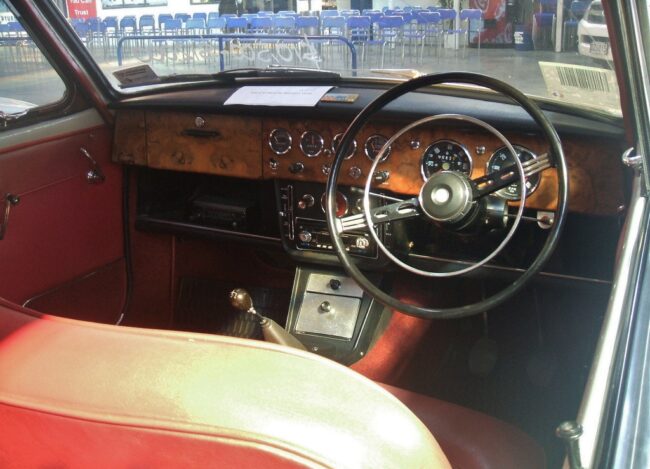
The revised instrument panel was still basically a slab of wood. The glovebox was moved up, which allowed space for the new open storage bins flanking the radio. The steering wheel was shared with the Alpine and Tiger roadsters. New seats and an adjustable steering column rounded out the changes.

Speaking of roadsters, the Alpine and Tiger had by now become the preferred Sunbeam rally cars, thus providing one more reason for the Rapier’s demise in the near future. After selling a record 17,354 Series IIIa Rapiers, Sunbeam began slowing production with the Series IV.
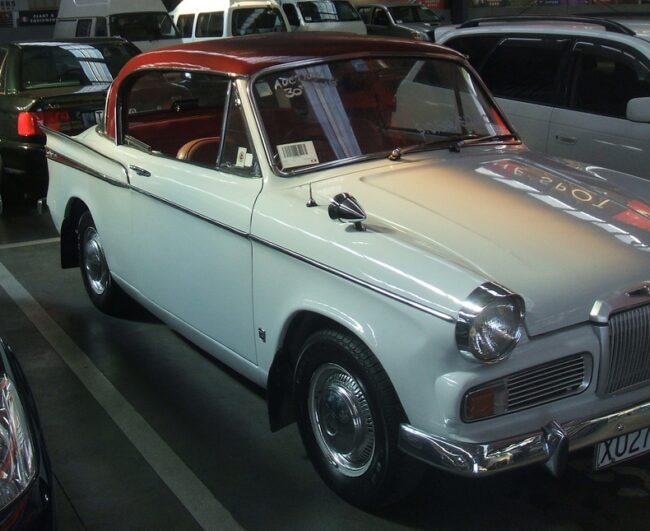
By late 1964, time was just about up for the Audax Rapier, although it did receive a new, all-synchromesh transmission along with the rest of the Rootes lineup. The last of 9,700 Series IVs came off the line in 1965–but would you believe the 1955 bodyshell still had one more surprise in store?
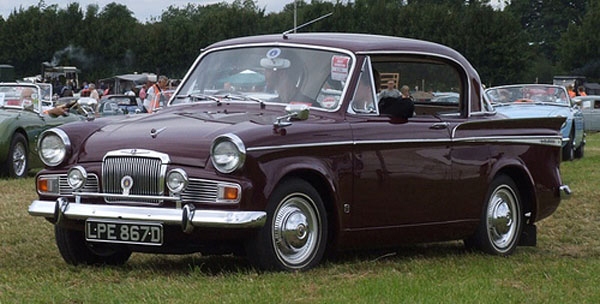
image: motorpix.com
The car that originally was going to bow out in 1963 returned one last time as the 1965 Series V. It still sported those Hawk-like fins and grille, but under the hood lived a 1,725 cc four. The ultimate Audax Rapier now had a top speed of 95 mph and a 0-60 time of 14.1 seconds.
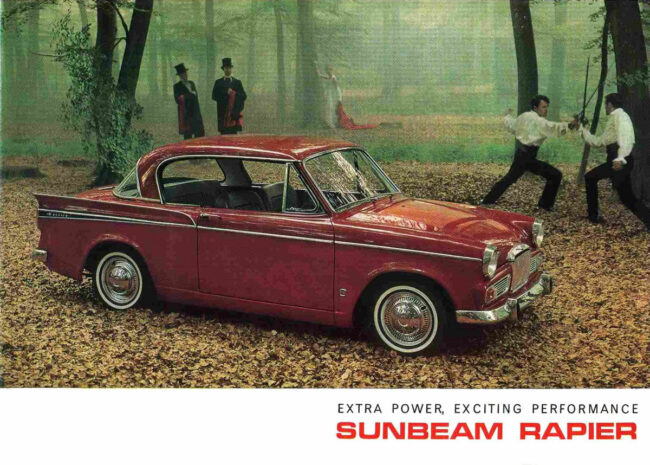
1965 Rapier Mark V
In a concession to modernity, the polarity was changed to negative earth and the antiquated dynamo was replaced with an alternator. Despite all the worthwhile improvements, the V didn’t sell well. It is the rarest version, with only 3,759 made. The final Vs were built in 1967, right around the time Chrysler purchased Rootes.
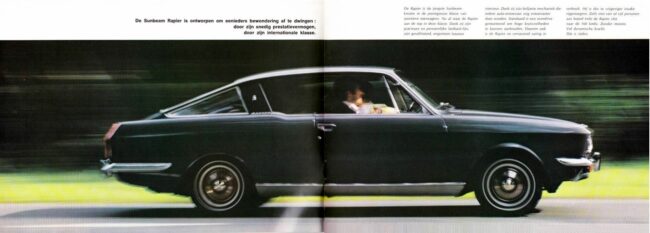
After the “Series” Rapiers were discontinued in 1967, a new, modern fastback Rapier was introduced the same year.

The new Rapier shared its platform (and most of its sheetmetal) with the redesigned Hillman Hunter sedan and flossier Humber Sceptre sibling. A less deluxe Alpine fastback joined the Rapier in 1970. Both of these Barracuda-like Sunbeam fastbacks continued until the 1976 model year, after which the Rapier would be gone for good. The Sunbeam name itself would not last much longer.
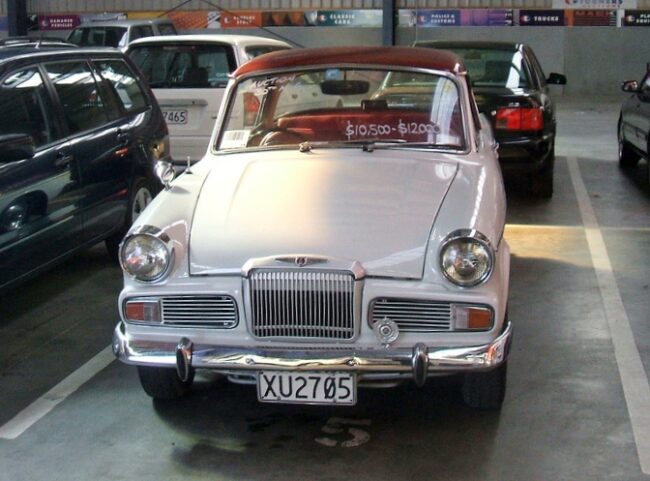
Special thanks to Bryce Chessum, who found our featured car at an auction several years back!







11 Comments
The Sunbeam Talbot 80’s 1,185 cc engine produced 47 horsepower rather than 80.
Thanks, originally wrote this ten years ago, the notes are long gone or hidden in a drawer sonewhere…
I can see why the Rapier caught Tom’s brougham loving eye. It is hard to imagine continental Europe trimming up a mass market small car to such a high level. We wonder in the USA how the big families of the old world 1960s made such small cars work. You can see how Rootes with that chrome work and dashboard was giving a taste of what a Jaguar or Rover was like to men of more limited means. Is it really that different from a mid 60s LTD giving a taste of Lincoln to men of less means
The switch to mini Barracuda Rapier under Chrysler shows what happens when the foreigners take over. The local driver has to make an accommodation, as fewer people are thinking of him.
It is often amazing what small companies can do with very limited resources – Studebaker turned out some very interesting cars during its last 15 years when they literally were flirting with bankruptcy every year, and the Europeans managed to crank out a lot of interesting technological innovations, and beautifully styled models and variations on a shoe-string production volume (and also some ugly buggers and technological disasters). In fact, Chevrolet alone sold more cars each year than all the automakers of Europe until the early 1960s.
Gee Tom only 4 comments, apparently there are not too many Sunbeam fans here at Riverside Green. Perhaps next time you should submit a picture of a Sunbeam mixer or blender and accompanying recipe involving alcohol to generate more discussion.
Guess nobody gets riled up about the Rootes Group, lol.
We are also missing here at the Riverside some of the great GB based commenters/contributers from the old site. A car like this was more personal to them.
Its not a GM car that brings up emotional damage and trauma in the commentators……
The Alpine sports car holds the distinction of being James Bond’s first on screen ride in 1962’s Dr.No.
On Dr. No: Remember when James escapes the jail and is in the plumbing, then a wall of water comes and engulfs him? Way back when I was a kid and we were watching it on TV, Dad said, “Oh no, Dr. No turds!” Hahahahaha.
HAHA, what I found odd is that the vents open up back into Dr.No’s complex, but none of that hot radioactive water makes it out of the vents into Dr.No’s lair…..